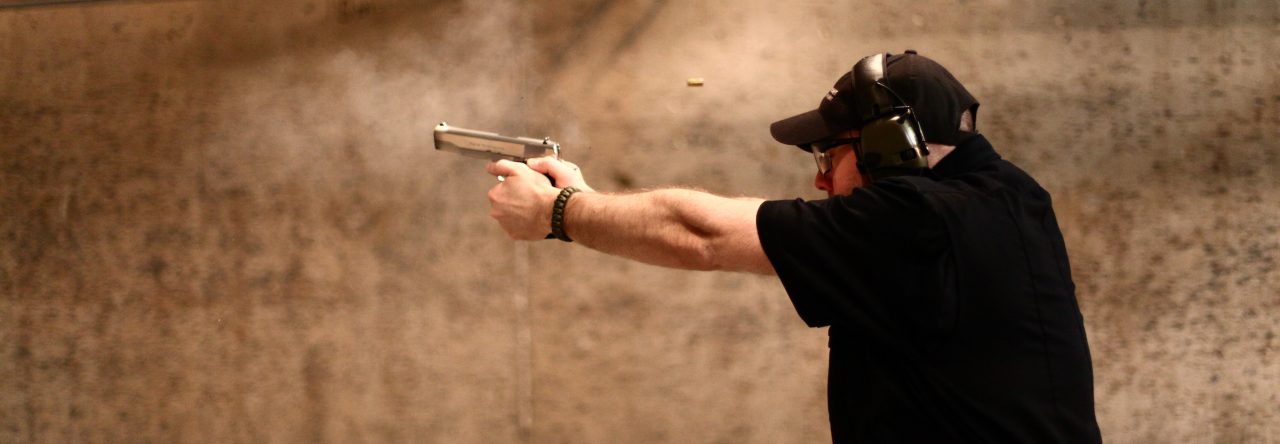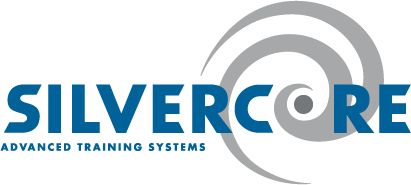Shooting sports don’t always have to mean shooting with a handgun, there are many sports available to new, and experienced shooters for rifle, and shotgun too. In this blog we will be reviewing the most common sports when it comes to competition shooting with rifles. These include the following:
- 3 Gun / MultiGun
- Airgun
- Bullseye
- Cowboy Action
- Fullbore Target Rifle
- Metallic Silhouette
- Muzzleloading / Black Powder
- Paralympic
- Precision Rifle Series (PRS)
- Small-bore
3 Gun / MultiGun
This shooting sport is exactly what it sounds like; it puts use to multiple guns such as Rifle, Shotgun and Handgun.

MultiGun matches are similar to IDPA or IPSC in that the shooter has different stages that they’ll move through to engage targets, often times shooting in different positions as well. Targets can include clay pigeons, cardboard silhouettes, steel targets, and more. The goal is to have the shooter hit as many targets in the least amount of time, while also avoiding ‘no shoot’ targets at the same time.
For more information on this shooting sport, read our blog post on Handgun Shooting Sports & How To Get Started or listen to episode 12 of The Silvercore Podcast where Taka Kuwata talks about 3 Gun competitions and how to become a sponsored shooter.
You can also learn more about 3 Gun/MultiGun and find a club that offers this sport visit the 3 Gun Nation website.
Airgun

You can compete using air pistol, or air rifle. The most common competitions when it comes to airguns are the 10 metre air pistol or air rifle which is an Olympic shooting event thats governed by the International Shooting Sports Federation (ISSF).
In this post we will focus on Air Rifle’s, but if you’d like to learn more about shooting with an Air Pistol you can read our blog post on Handgun Shooting Sports & How To Get Started.
Air rifle shooting is shot at a distance of 10 metres and is shot from the standing position. Specialized clothing may be used to improve stability and also prevent back injury that can be caused by stance and weight.
Equipment required for this shooting sport includes the following:
- Air / Gas Rifle
- Chambered in .177″ (4.5mm)
- Weight under 12.13 lbs (5.5kg)
- Match Diabolo Pellets
To learn more about the Air Rifle visit the ISSF website here.
Bullseye
Bullseye competition shooting can be done using a handgun or rifle and both platforms feature multiple disciplines available to shooters.
There are several disciplines when it comes to bullseye shooting with rifles, these include:
- ISSF 10 meter air rifle
- Small-bore shooting competitions
- Fullbore rifle shooting
- ISSF 300 meter standard rifle
- ISSF 300 meter rifle prone
- ISSF 300 meter rifle three positions
- High power rifle
Equipment required to participate will greatly depend on which discipline you plan to get into. So do your research and figure out which one interests you most and then you can make your decisions on what equipment you’ll want based on requirements.
A local club is likely to have one or more of the disciplines listed above for you to get started in the competition shooting, but you can also check online with the International Shooting Sports Federation (ISSF0)
Cowboy Action
Cowboy Action is a competitive shooting sport which typically features firearms from the mid-to-late 19th century like Single Action revolvers, Lever Action rifles that are chambered to shoot pistol calibre’s. Side-by-side double-barrelled shotguns and Pump Action shotguns with external hammers may also be used.

To compete, you’ll need four guns; two revolvers, a shotgun, and a rifle that shoots a centre-fire revolver calibre that pre-dates 1899.
For more information and finding a club to participate in this sport visit the Single Action Shooting Sport (SASS) website for Canadian clubs.
You can also find more information on what Cowboy Action consists of in our previous blog post; Handgun Sport Shooting & How To Get Started.
Fullbore Target Rifle
Fullbore Target Rifle, also known as TR, or just Fullbore, is a precision rifle shooting sport which is governed by the International Confederation of Fullbore Rifle Associations (ICFRA). In Canada, national level competitions are regulated by the Dominion of Canada Rifle Association (DCRA).
Believe it or not, this shooting sport is one of the oldest shooting disciplines in the world! Founded by the NRA back in 1860, participants shoot between distances of 300 yards, all the way up to 1000 yards from the prone position.

The goal is to have as accurate a shot on the circular targets as possible. Shooters must focus on their trigger control, position and natural alignment in order to get as close to the centre as possible, all while keeping in mind changes in windage and elevation.
To get into this sport, shooters will need the following basic equipment:
- Bolt Action Rifle (chambered in 7.62mm (.308″))
- Iron sights (telescopic sights are not allowed)
If you would like more information on how to get into this sport, we would recommend taking a look at the DCRA website.
Metallic Silhouette
Metallic silhouette shooting started from an old Mexican sport back in the early 1900’s and consisted of live game animals being put out at varying distances and used as targets. Nearly 50 years later metal cutouts were being used in place of live animals.
The metal cutouts are of a chicken, pig, turkey, and ram with the goal being to knock down as many targets as possible out of a total of 40 targets. You’re given a time limit of 2 minutes and 45 seconds for banks of 5 to shoot at and are required to hit 10 shots .
Today, metallic silhouette can be shot with large bore rifles, or large bore handguns, however in Canada it’s just shot with Rifles at this time.
There are a few divisions in the Rifle category of Metallic Silhouette, there are a number of divisions in the USA, and then there are those that are National. The National divisions include the following:
- IMSSU Silhouette Rifle
- IMSSU Hunting Rifle
- IMSSU Silhouette Rifle Small Bore
- IMSSU Hunting Rifle Small Bore
To participate in this shooting sport, you’ll need a Bolt Action Rifle (.22 is typically used). For more information and to find a competition to participate in near you, visit the Silhouette Rifle Association of Canada (SRAC) website.
Muzzleloading / Black Powder
Muzzleloading sport shooting uses both antique as well as reproduction muzzleloading firearms and use shot using Black Powder which is why you may also see this sport as being reference to as Black Powder rather than Muzzleloading.
Rifles are what is commonly used for muzzleloading, but there are shotgun muzzleloaders as well. Of the muzzleloading firearms, there are Matchlock, Wheel lock, Flintlock, and Percussion. Flintlock and Percussion are typically what are used in shooting competitions or for hunting.

This particular sport originated from the USA in the 1930’s and is now governed by the Muzzle Loaders Associations International Committee (MLAIC), founded in 1971.
To get started you will need the following equipment:
- Muzzleloading firearm (Flintlock or Percussion)
- Powder horn or flask (to carry extra powder)
- Powder measure
- Ball starter (to get the bullet down the barrel)
- Pick (to remove residue or debris)
- Ramrod (to seat bullet against powder charge, and for cleaning)
- Brushes and Solvent
- Patches (to create a tight seal in the barrel)
- Patch puller (to remove patches)
To get started in this shooting sport you can often search the province you are in and then black powder and find either a local club that is offering competitions, or a provincial body that helps to facilitate the sport. In BC this is the BC Black Powder Association (BCBPA)
Paralympic
Para, which was also formerly known as Para-Shooting refers to Paralympic competitions and consists of shooting sports which have been adapted to allow for competitors with disabilities to compete and are open to all individuals with physical disabilities. Since 1976 this sport has been part of the Paralympic games in Toronto with as many as 50 different countries participating in it today.
Competing can include rifle and pistol from distances of 10, 25 and 50 metres. There are 12 Paralympic shooting events, 6 of which are open to men and women, while the other 6 are divided between men and women only equally (3 each).
Para shooting with handguns can be read in previous blog post on Handgun Shooting Sports & How to Get Started. Para shooting with rifles has 9 different disciplines that are split into 2 different classes. The SH1 class allows shooters to support a firearm without a stand, and the SH2 class allows shooters to use a support to shoot for those that require it. The disciplines of each class consist of the following:
SH1 Class
- 10M Air Rifle Standing (Men)
- 10M Air Rifle Standing (Women)
- 10M Air Rifle Prone (Mixed)
- 50M Rifle Prone (Mixed)
- 50M Rifle 3-position 3×40 (Men)
- 50M Rifle 3-position 3×20 (Women)
SH1 Class
- 10M Air Rifle Standing (Mixed)
- 10M Air Rifle Prone (Mixed)
- 50M Rifle Prone (Mixed)
To get started in this sport visit the Paralympic Website here.
Precision Rifle Series (PRS)

Precision Rifle Series, which is also commonly known as PRS, is a shooting sport where shooters compete to collect points from 30 various matches. Focus is typically placed on speed and precision.
Targets may be placed at known, or unknown distances, but are typically somewhere between 10 – 1,000 metres or yards with the primary focus on the long range distance shooting.
The various courses have set maximum times, also known as par time, in which the shooter can be awarded points based on the number of targets that they hit within that time.
Different categories within PRS which you can participate in include the following:
- Military / Law Enforcement (active)
- Senior (55+)
- Junior (18 & under)
- Ladies
- International

The basic equipment required to partake in this shooting sport includes the following:
- Long range sniper-style rifle
- Must fire bullets no greater than 0.308″ (7.82mm) at muzzle velocities not greater than 3200ft (980m) per second
- Variable magnification telescopic sights
- A support bag
For more information on PRS, you can listen to Episode 29 of The Silvercore Podcast!
For further details on PRS and how to get started, we’d recommend visiting the Precision Rifle Series website.
Small-bore
Small-bore is shot with a rifle and consists of firearms that are chambered in .32 or smaller, but is most commonly shot using a .22 Rimfire target rifle.
Targets are typically shot between 15 – 25 yards if indoors, and when shot outdoors they can be between 50 – 100 yards.
To get into small-bore sport shooting you will need a rimfire target rifle that is chambered in .32 or smaller.
To get into a small-bore shooting competition, you can search for a local club that is offering competitions near you, or visit the BC Target Sports Association (BCTSA).
Conclusion
Keep in mind that there are many other shooting sports available out there and some which will depend on where you live. So if you didn’t find the shooting sport you were looking for, do some reading online and you’re likely to find what you’re looking for.
The Silvercore Club provides 10 Million in North American wide liability insurance for all your hunting and shooting related activities. For only $49/year you get insurance, an ATT for any restricted firearms you may own, member discounts, and so much more.
If you are looking to get into shooting with a handgun, be sure to check out our other blog post; Handgun Sport Shooting & How To Get Started and keep an eye out for an upcoming blog post on Shotgun Sport Shooting & How To Get Started.











